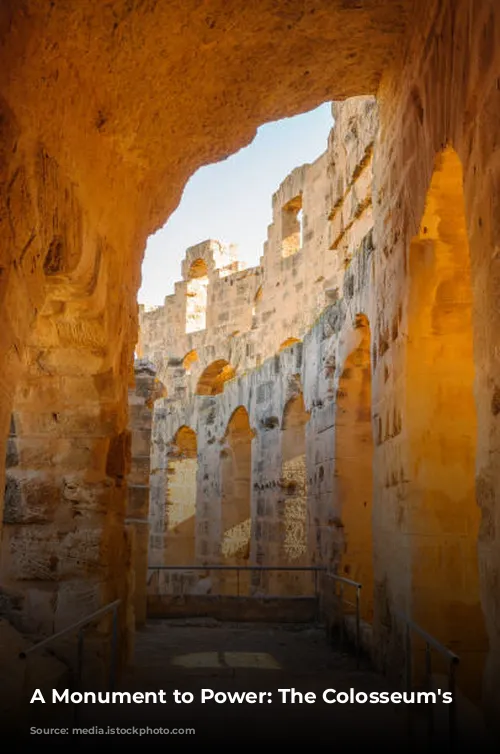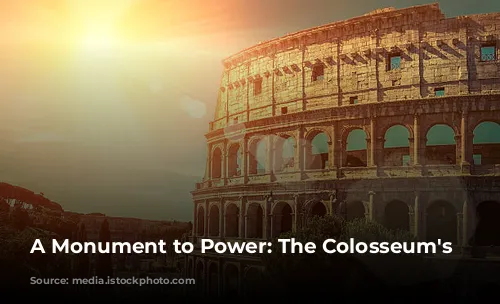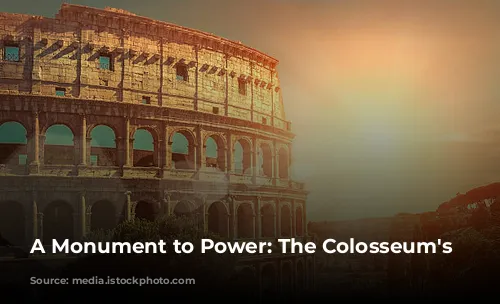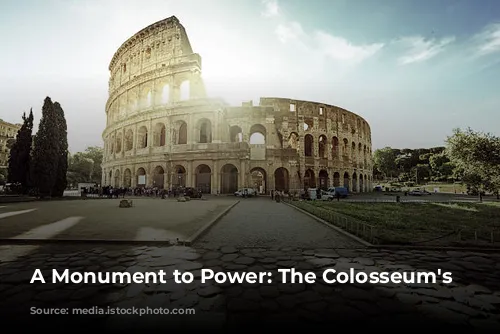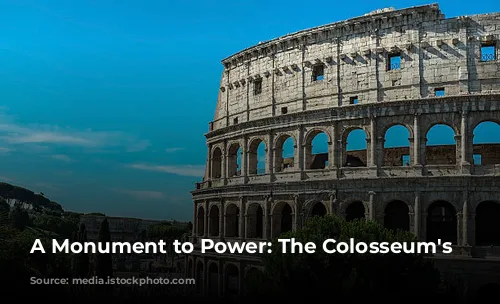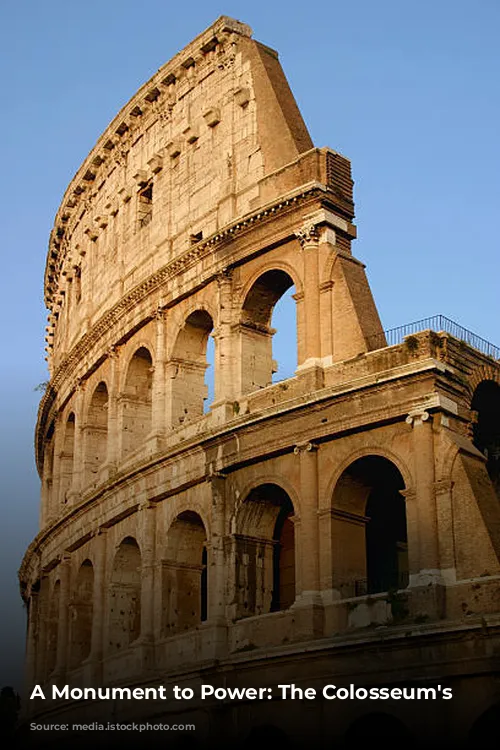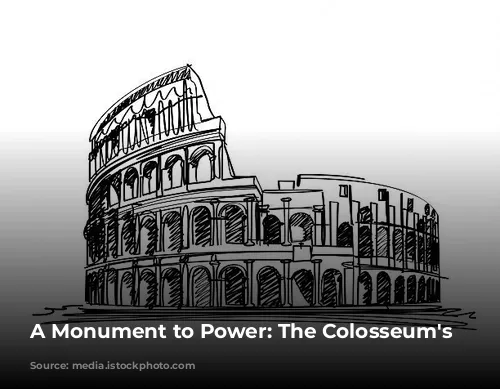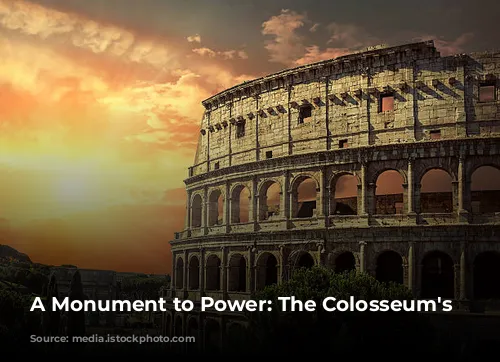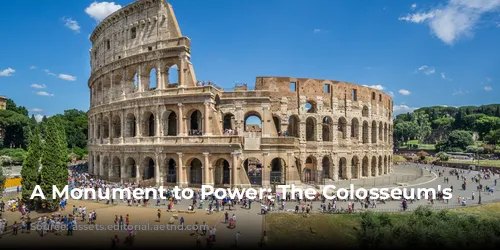The Colosseum, a name whispered with awe and wonder, stands as a testament to the grandeur of the Roman Empire. More than just a breathtaking architectural marvel, it’s a monument to power, a stage for the spectacles of ancient Rome, and a glimpse into the daily lives of its citizens. It’s the Flavian Amphitheater, a symbol of rebirth and dominance after Rome’s tumultuous period of civil war and devastation.
The Flavian Dynasty, led by Emperor Vespasian, his son Titus, and grandson Domitian, embarked on a remarkable rebuilding program. They sought to heal the wounds of the city, and the Colosseum stood as a shining testament to their ambition. Built with spoils seized during the siege of Jerusalem, it served as a dramatic symbol of the city’s resurgence. This colossal structure was more than just bricks and mortar; it was a beacon of hope, a reminder of the enduring power of Rome.

A Marvel of Engineering and Design
The Colosseum wasn’t just a grand spectacle; it was a feat of engineering. Its construction utilized an unprecedented amount of materials, including concrete, travertine, and marble, showcasing the Roman mastery of construction techniques. It stands as a testament to their understanding of materials and their ability to create structures of unparalleled scale. The sheer size and complexity of the Colosseum make it a marvel of engineering, one that continues to impress even today.
The Colosseum was built on the site of Nero’s Domus Aurea, a testament to his extravagance. By replacing this opulent palace with a structure for the people, Vespasian sought to erase the memory of his predecessor and establish a new era for Rome. The Colosseum became a symbol of this new era, a testament to the Flavian dynasty’s commitment to the city’s well-being.
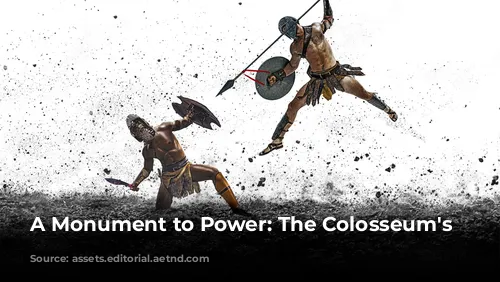
A Social Hierarchy in Stone
The Colosseum was more than just a structure; it was a reflection of Roman society itself. Its intricate seating arrangement mirrored the strict social hierarchy of the time. The Emperor and the senatorial nobility occupied the most coveted seats, their position a testament to their power and influence. The Equestrian Order, comprised of merchants, artisans, and bureaucrats, were seated above them, while the ordinary citizens occupied the less desirable upper tiers. The Colosseum served as a microcosm of Roman society, with its seating plan reinforcing the social order.
The Colosseum boasted an intricate system of entrances and corridors designed to ensure an orderly flow of people. The Emperor and other dignitaries had their own special entrances, while the ordinary citizens were guided through specific corridors to their designated seats. This elaborate system ensured a smooth experience for the vast crowds that gathered for these grand spectacles. The Colosseum was a testament to the Romans’ ability to manage large crowds and organize grand events.
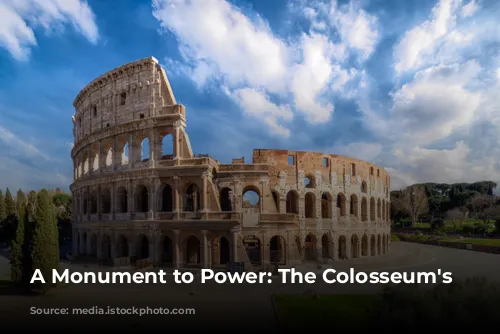
A Legacy of Innovation
The Colosseum was a groundbreaking structure, pushing the boundaries of architecture and engineering. Its use of concrete was unprecedented, a testament to the Romans’ understanding of materials and construction techniques. The Colosseum’s durable concrete foundation has allowed it to withstand the ravages of time, standing as a symbol of enduring strength.
The Colosseum was more than just a spectator venue; it was a stage for elaborate spectacles. It boasted a sophisticated drainage system to handle water used for mock naval battles. A retractable awning protected spectators from the elements, while a complex network of chambers and tunnels beneath the arena floor housed props, scenery, and participants. The Colosseum was a marvel of innovation, a testament to the Romans’ ingenuity and their ability to create spectacles that captivated the imagination.
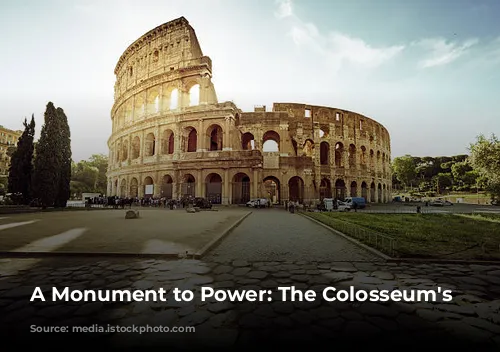
The Colosseum’s Enduring Legacy
The Colosseum is more than just a historical landmark; it’s a testament to the human spirit, a symbol of the enduring power of art, architecture, and engineering. Its grand design and intricate construction continue to inspire awe and wonder. The Colosseum is a reminder of the enduring legacy of the Roman Empire and its contributions to civilization.
The Colosseum’s influence can be seen in modern stadiums and arenas, echoing its design and functionality. It serves as a reminder of the interconnectedness of history and the enduring impact of human ingenuity. It’s a testament to the Romans’ ability to build structures that not only served their purpose but also captured the spirit of their times, leaving a legacy that resonates through the ages. The Colosseum, a monument to power, ambition, and innovation, continues to inspire and captivate the world.
